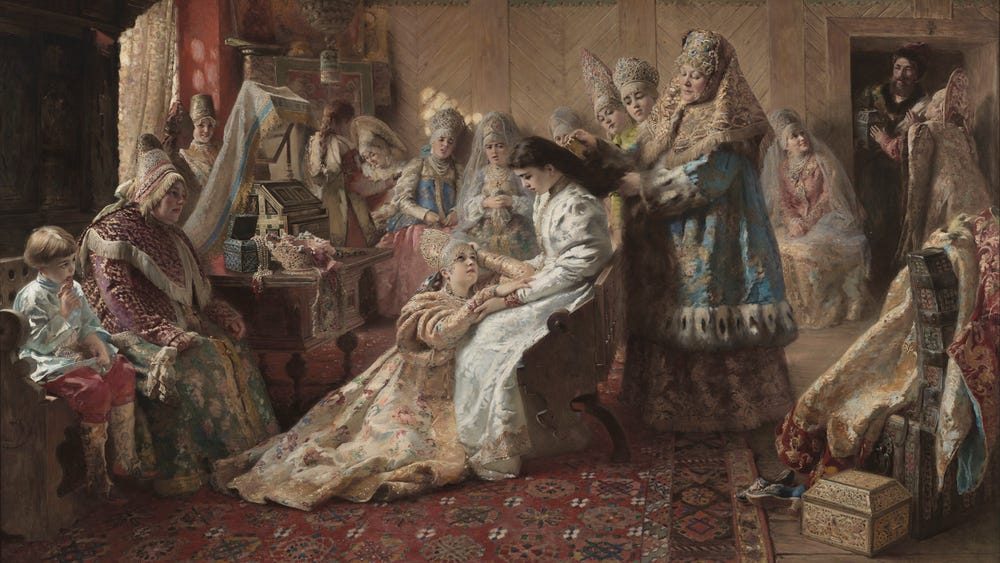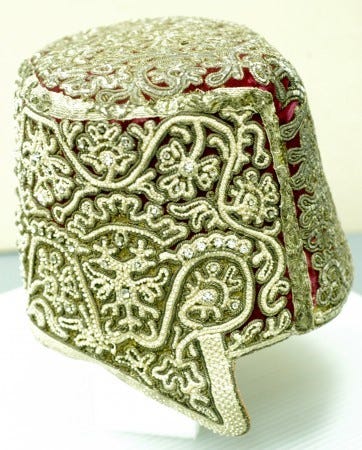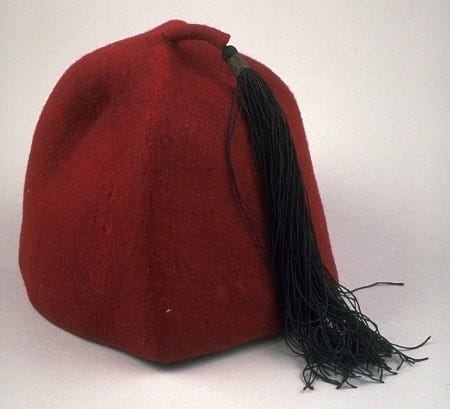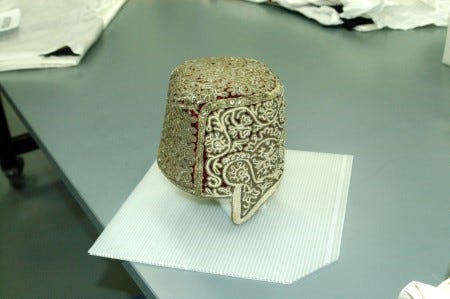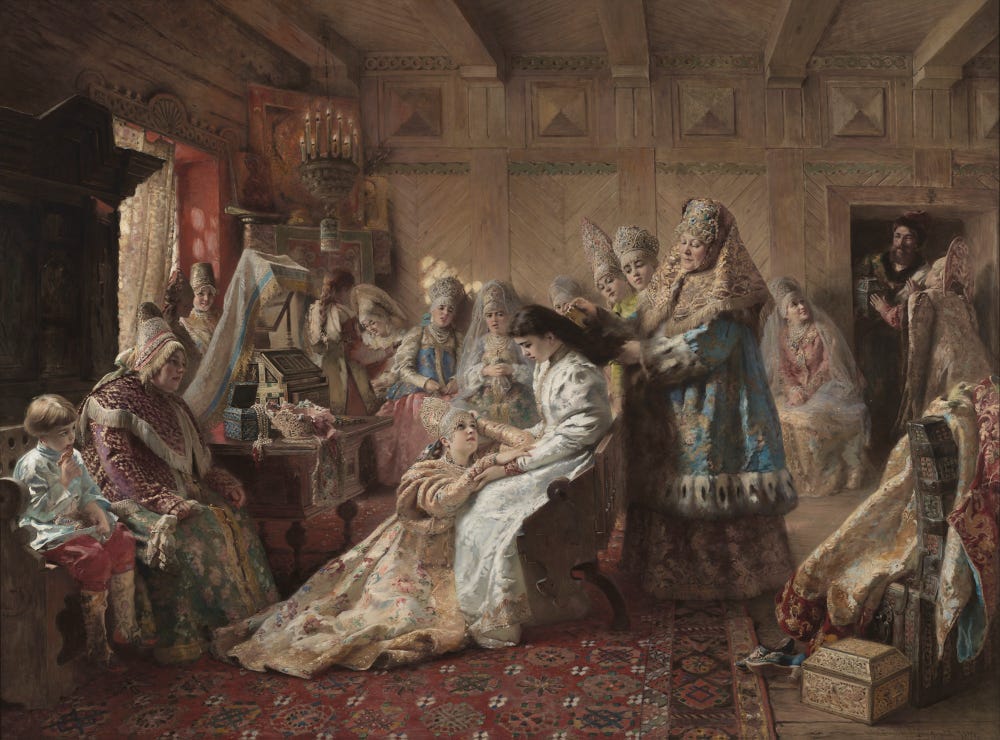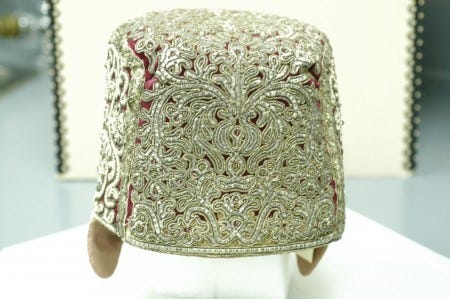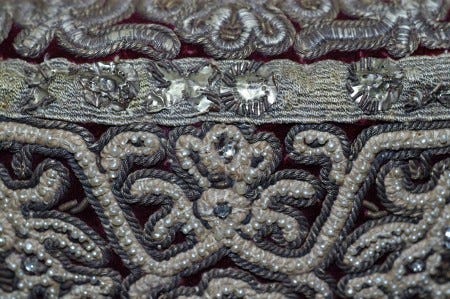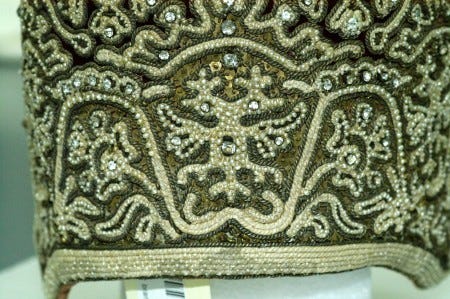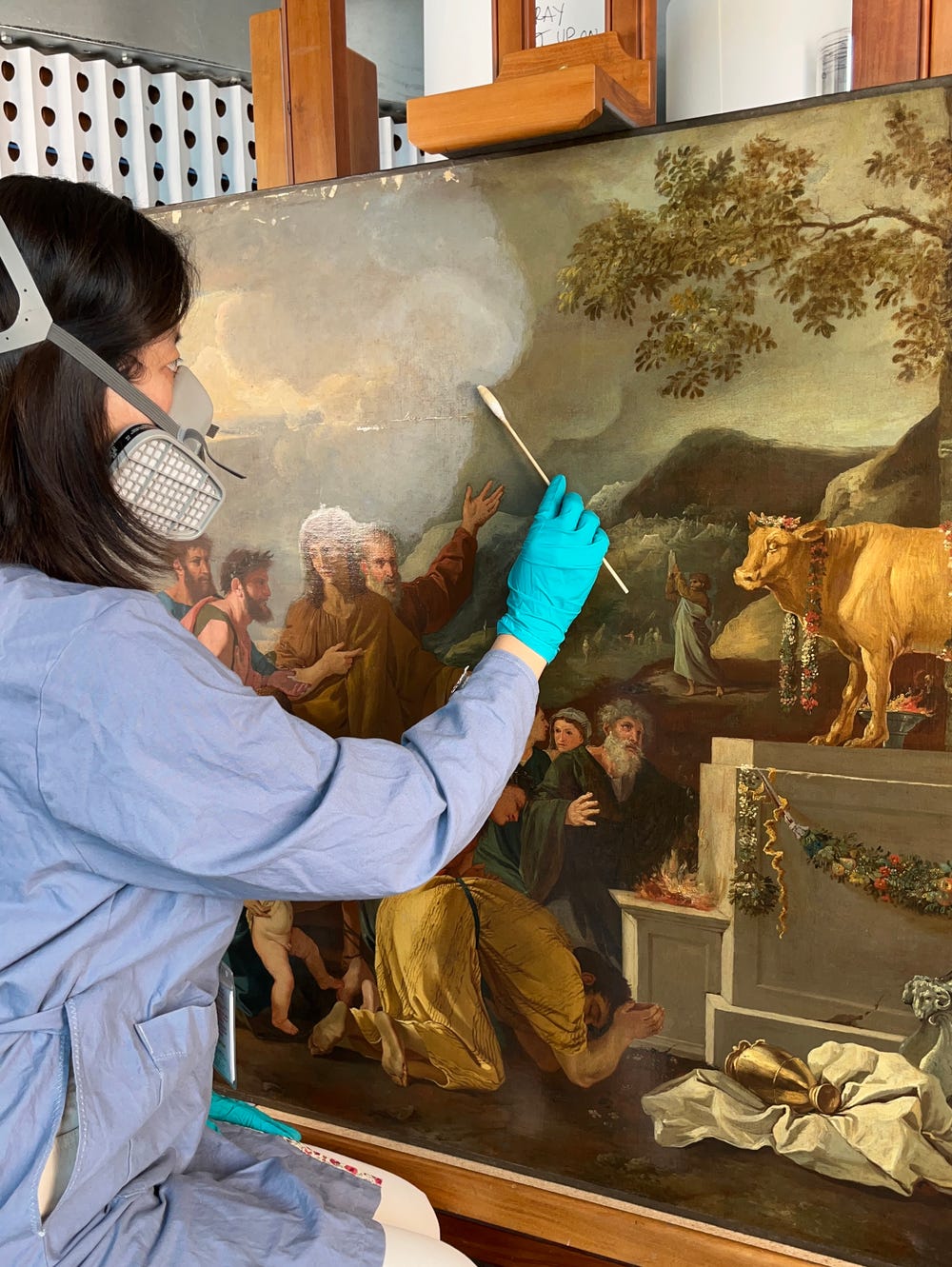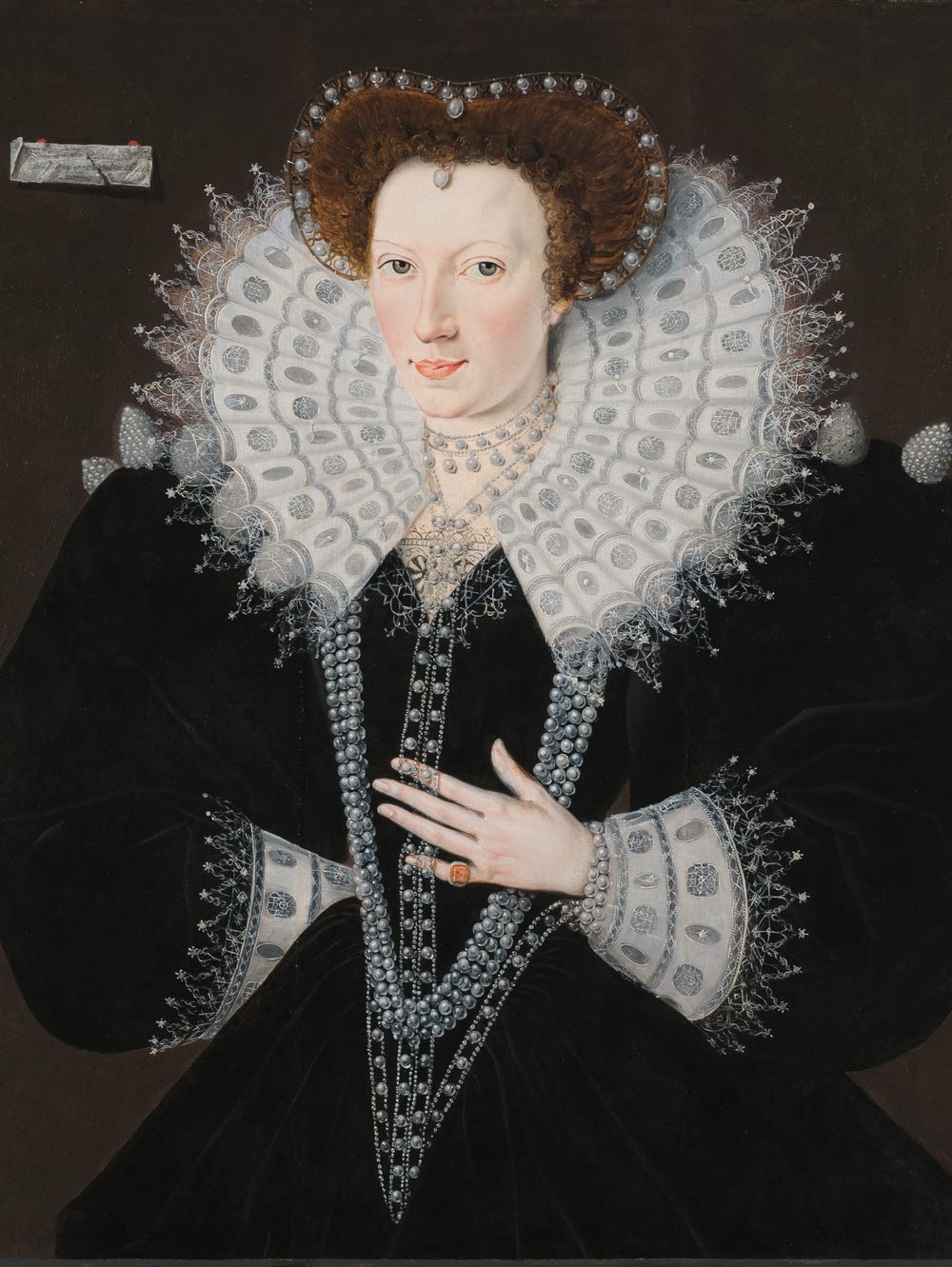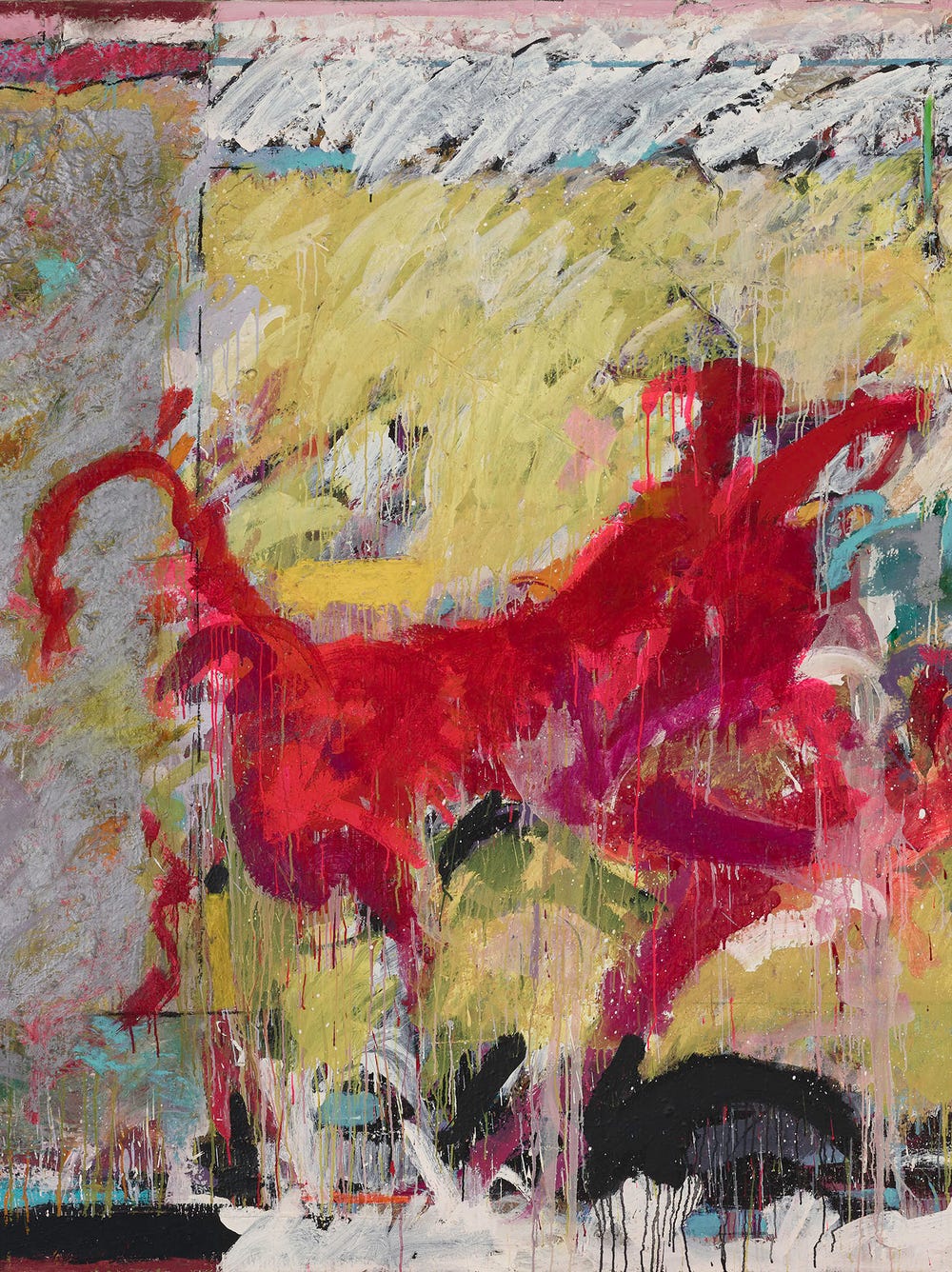Konstantin Makovsky, The Russian Bride's Attire, 1889. Oil on canvas, 110 x 147 in. (279.4 x 373.4 cm). Fine Arts Museums of San Francisco, bequest of M. H. de Young, 1926.03.27, 53161
The hat had been sitting there in the dark for years, unremarked upon. Its swirl of freshwater pearls, the imperial double eagle on the front, the decoration of thick gold braid on red velvet; none of it was included in the simple description — “Woman’s Fez” — in the Museums’ records.
A more typical fez is relatively plain, like this men’s version from the Museums’ collection:
The “woman’s fez” was given to the Museums’ in 1978 by Mrs. Roos of the department store Roos-Atkins, which was established in the San Francisco Bay Area in 1957. It was removed from storage during a long term project undertaken by Textile Conservation Lab volunteers to upgrade hat storage mounts.
As the hat sat on the lab table waiting for attention, the conservators were able to take a closer look at the overall shape, the materials it was constructed of, and its embroidered images.
Suddenly one of them noticed something strange—she’d seen this hat somewhere before.
The clue had been hanging at the Legion of Honor for years, a small detail in a crowded painting from 1889, The Russian Bride’s Attire, by Konstantin Makovsky. The scene depicted Russians preparing a young woman for her wedding day. There wasn’t just one hat in the painting, but a riot of them, 15 in all, coned and arched, veiled and jeweled.
Konstantin Makovsky, The Russian Bride's Attire, 1889. Oil on canvas, 110 x 147 in. (279.4 x 373.4 cm). Fine Arts Museums of San Francisco, bequest of M. H. de Young, 1926.03.27, 53161
The conservators spent an afternoon’s work in the Textile Study Room, searching for anything having to do with 18-20th century Russian costume, history and embroidery.
An internet search revealed that the “woman’s fez” looked a lot like a “kokoshnik,” a traditional Russian piece of female head-wear that first appeared in the 17th century. A consultation with Jan Reeder, consulting curator for the Brooklyn Museum Costume Collection at The Metropolitan Museum of Art, revealed that she knew of several examples in the Brooklyn Collection. An interview with Jan confirmed the conservator’s suspicions.
The shape . . . The squared-off front edge may have originally had decorative fringe or net attached.
The materials . . . The use of fresh water pearls, most likely from near the Oka River, is typical of Russian embroidery of this style.
And the imagery . . . The double-headed eagle, symbol of imperial Russia, is the most ubiquitous of all images on Russian textiles.
The Russian was revealed. This was an authentic woman’s kokoshnik, dating somewhere between the mid 19th and early 20th centuries. The dots had been connected across the museum, from a painting to the textile collection, with the conservator’s expertise as the connecting line. It was a case of very different objects speaking to each other across time and space, a rewarding discovery within our own permanent collection.
